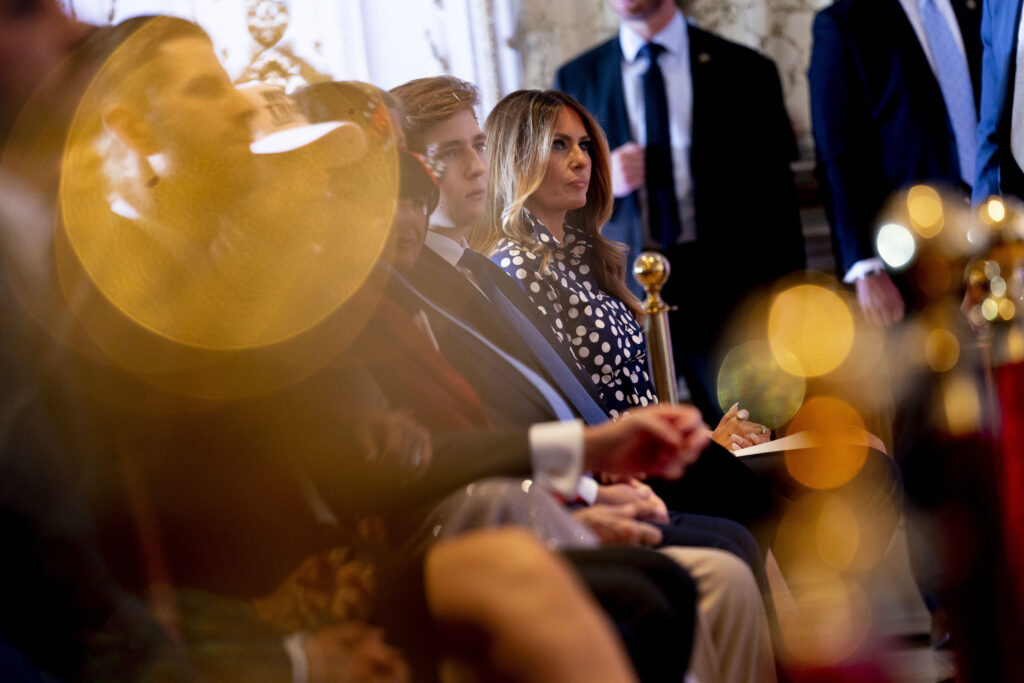Hollywood Power Couple in the Making
Does Humphrey Bogart Still Captivate the Imagination?
Does Humphrey Bogart still command the same name recognition—the same mythology—that he did even for decades after his death? He used to be, as William J. Mann describes in Bogie & Bacall, one of the few old movie stars to appeal to generations far younger than his. But that posthumous popularity seems to have dissipated: When I first arrived at college in 2015, some of my classmates were buying posters of Marilyn Monroe, Audrey Hepburn, James Dean—but few, if any, of Bogart. And none of the posters were of Lauren Bacall, Bogart’s fourth wife and four-time leading lady, even though she lived until 2014.
The Mythology of Humphrey Bogart
With the mythology on the wane, Mann’s book—which aims at debunking, or at least bringing down to earth, the Bogart and Bacall story—may seem like twisting the knife. In reality, though, Mann isn’t as tough on—or as surprising about—his subjects as his publisher suggests.
The thread that runs through the book (one might even say its thesis) is that, as Mann writes in the preface, “the cynical, hard-hearted Humphrey Bogart was a softie when it came to love.” But isn’t this part of the onscreen Bogart image? It appears in 1942’s Casablanca, of course, where Bogart’s formerly apathetic Rick famously persuades Ingrid Bergman’s Ilsa to go with her husband to fight the Nazis, because “I’m not good at being noble, but it doesn’t take much to see that the problems of three little people don’t amount to a hill of beans in this crazy world.“
But this tough-guy exterior, softie interior also appears in everything from 1941’s High Sierra (he’s a gangster with a soft side, who wants to leave crime behind) to 1948’s Key Largo (he’s a cynical soldier but, because of the plot, rediscovers his morality) to 1951’s The African Queen (he’s a stoical steamboat skipper who finds love and moral responsibility thanks to missionary Katharine Hepburn), to name just three examples.
And Mann knows that Bogart sought that kind of role. So why does he keep pushing this point—Bogart’s inner sentimentality—as if it should surprise the Bogart fan?
The Bogart-Bacall Romance
That sense of unsurprising surprise also comes through in Mann’s discussions of Bogart’s three wives before Bacall: Helen Menken, Mary Philips, and Mayo Methot. Mann rightly argues that some of Bogart’s friends and biographers have done a disservice to Methot in particular, saying that Bogart was never really in love with her and absolving him of blame in the marriage’s breakup. Mann also does admirable work in sleuthing out the facts behind Warner Brothers’ press releases, as well as in frankly discussing Bogart’s affair with Verita “Pete” Peterson, which began before the Bogart-Bacall marriage but might have continued during it.
Yet it is Mann, rather than a Bogie buddy or a studio publicist, who declares that the Bogart-Bacall romance was “arguably Hollywood’s greatest love story, and maybe not even so arguably.” For all that he redeems the images of Menken, Philips, and Methot, and delves into Peterson’s story, he structures his book to make the reader think that the Bogart-Bacall marriage was the central event in both stars’ lives, the moment to which everything prior had been leading up. When Mann talks about Bogart’s death (in 1957, of cancer after years of hard drinking and smoking), he goes so far as to hope that, because Bacall was by Bogart’s side, “some of the old demons were at last chased away and Bogie finally understood what it felt like to be loved.“
In fact, the book only really comes alive when Bacall enters, at the 226-page mark. Bacall was only 19 when she met the then-44-year-old Bogart, on the set of 1944’s To Have and Have Not, and that May-December difference in their ages means that Mann must devote hundreds of pages to Bogart before Bacall’s birth and to Bacall after Bogart’s death. The birth years in some ways force the structure of the book, but that just goes to show that maybe a dual biography of Bogart and Bacall is too much for one book to handle, even at over 500 pages.
The Hollywood Cinderella Story
Bacall, born Betty Perske to Romanian and Russian Jewish immigrants (and known by all, Mann reveals, as Betty, despite the press’s claim that Bogart called her “Baby”), livens up the book—and brings out Mann’s best writing. Admittedly, she does have the Hollywood Cinderella story: Producer-director Howard Hawks’s wife saw Bacall, then a model, in a magazine photo shoot and showed the pictures to her husband. Hawks offered Bacall a contract sight unseen—though only, Mann clarifies, for a screen test. The rest, one might say, is history, though in fact Bacall’s film career was rocky throughout the ’50s and ’60s (one reason that she left Hollywood for Broadway, as Mann documents).
Perhaps because of Bacall’s liveliness, Mann lets her tell a significant part of her story through her memoirs (1978 and 1994). That may give the reader pause, especially after Mann spends so much time investigating whether Bogart’s words about his life were accurate. To be sure, Mann doesn’t allow Bacall free rein; he does fact-check her—but it’s usually a gentle fact-checking. He calls Bacall’s memoirs “honest and straightforward,” for example, though he allows that she was ”interested in constructing a legend” around herself and Bogart.
Mann is at his best when he’s not straining to demythologize that legend (or speculate about Bogart’s mental state) but rather simply to share true stories about his two subjects. The chapters on Bogart and Bacall’s fight against McCarthyism are consistently interesting and reveal Bogart’s deep opposition to being told what to do or think. Mann’s argument that Bogart’s 1947 statement against Communism represented “the decision to capitulate,” however, is unconvincing: It is more than possible to oppose both McCarthyism and Communism, and Bogart’s politics extended no further left than New Deal liberalism.
The Enduring Mythology of Bogie and Bacall
As much as Mann is aiming for a warts-and-all biography, his affection for the Bogart-Bacall romance shines through. That affection, more than anything else, is what keeps the reader turning pages. Ultimately, Mann’s book shows, Bogie and Bacall merit their mythology. That’s why they deserve even more than dorm-room posters: They deserve to be remembered, with their movies watched, rewatched, and loved by old and new fans alike.
Bogie & Bacall: The Surprising True Story of Hollywood’s Greatest Love Affair
by William J. Mann
Harper, 656 pp., $40
Karl Salzmann is an assistant editor at the Washington Free Beacon.
Another question to consider is: Does Mann’s attempt to revive the mythology surrounding Bogart through debunking the Bogart and Bacall story effectively reintroduce him to a younger generation?
Her tumultuous film career, Bacall’s presence in the book is more exciting and captivating than Bogart’s. Mann’s writing becomes more vibrant and engaging when he delves into Bacall’s life and career. However, this raises the question: does Bogart still captivate the imagination as much as Bacall does?
It seems that the answer to this question is no. While Bacall’s allure and talent continue to captivate audiences, Bogart’s popularity has diminished over the years. The decline in his name recognition and mythology can be seen in the lack of Bogart posters among younger generations. Marilyn Monroe, Audrey Hepburn, and James Dean remain popular choices for dorm room decorations, but Bogart is noticeably absent.
Mann’s book attempts to revive the mythology surrounding Bogart by debunking the Bogart and Bacall story, but it falls short of providing any surprising revelations. The notion that Bogart, the tough-guy onscreen, had a soft side when it came to love is not a new revelation. It is a characteristic that is evident in many of his iconic roles, from “Casablanca” to “The African Queen.” Therefore, Mann’s emphasis on Bogart’s inner sentimentality as a surprising aspect of his personality seems unnecessary.
Mann’s discussions of Bogart’s previous marriages and affairs are informative, but it is his exploration of the Bogart-Bacall romance that truly shines. He presents it as Hollywood’s greatest love story, positioning it as the central event in both stars’ lives. However, this focus on their relationship and the subsequent chapters dedicated to Bacall’s life before and after Bogart’s death suggest that a dual biography of Bogart and Bacall may have been too ambitious for one book.
Bacall’s Hollywood Cinderella story, from her discovery by Howard Hawks to her rocky film career, adds an exciting element to the book. Mann’s writing becomes more animated when discussing her life, further highlighting her continued ability to captivate audiences.
In conclusion, while Bacall’s presence in Mann’s book is captivating and vibrant, Bogart’s allure seems to have faded over time. His name recognition and mythology no longer hold the same fascination as they once did, which is evident in the lack of Bogart posters among younger generations. Ultimately,
" Conservative News Daily does not always share or support the views and opinions expressed here; they are just those of the writer."





